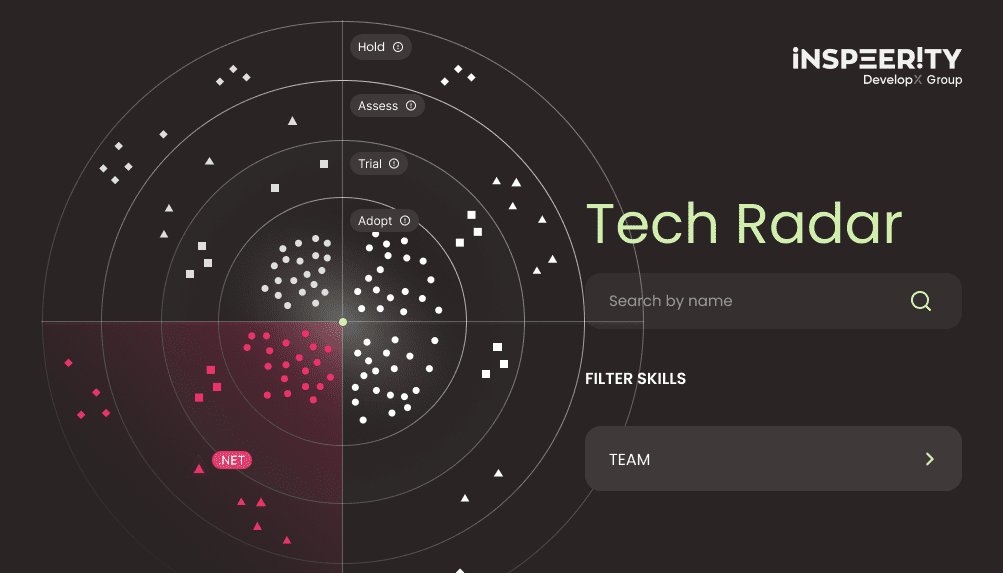In today’s blog, I will outline how to get started with a Dedicated Development Team while sharing my advice on each stage of the process.
From how to find the right software partner and evaluate if they are the best fit for your project, to critical steps to take in the early days of collaboration. As well as tips on how to get the most out of your cooperation. I will take the time to tackle the stages in order so let’s jump in.
Why do clients choose dedicated teams?
The first point to tackle is why should you hire a dedicated development team. A dedicated team model offers a solution for organizations lacking critical expertise, providing access to experts without the need for full-time, in-house specialists. This model also offers flexibility and scalability, allowing teams to adjust in response to market changes, optimizing costs and performance. By delegating non-core tasks to the dedicated team, businesses can focus on their core strengths, freeing up valuable time and resources. Additionally, this approach helps reduce costs and increase efficiency by outsourcing recruitment challenges to a software partner, who can bring their expertise directly into the business.
Read more about our dedicated development team service.
How to hire a dedicated software development team?
Hiring a dedicated team starts with finding the right partner. Like life, finding a partner is about having that connection. But finding the right someone who can get your product to the market on time and to budget isn’t easy. Here I want to share some advice with you. When it comes to deciding on a software partner, consider the following first. Once you have a clearer idea about what criteria suit you, the easier it’ll be.
Consider:
- What do you want to get out of your partnership?
- Does the software partner have external business knowledge?
- The regional and cultural differences.
- Do they have references?
- Can they demonstrate any relevant projects/case studies?
- Upcoming costs that could impact the project
- Can they produce certificates or qualifications for relevant technology?
Look for software houses that fit your ideas. And answer the question “Who is your ideal partner?” Take some time to understand their culture and how they work. Whether they prefer to work at a faster pace or take a slow, methodological approach. As well as how they operate and run their business.
It doesn’t matter if it’s for a dedicated team or in-house, it’s about matching your personality to theirs.
Based on your criteria, create a pool of vendors. And from this, match your needs against their experiences and references. Based on your needs some fit better than others. Take the time to evaluate your choices until you have a clear favorite. And that’s how to find a dedicated team.
Once you know who you want to work with, you need to get the details of the project set.
Read also: It’s the Management, stupid! – 9 traits I use to evaluate outsourcing IT companies.
How do we build a dedicated team?
We try our hardest to offer team members that match your needs. Candidates who can bring their ideas to the project. We want our team to be able to speak openly and share advice on how to improve working conditions.
That’s why we work with Agile and run daily meetings where we encourage you to take part.
But, while building the team we do offer you the chance to interview the candidates, as if you were hiring internally. This means everything is transparent and that you have a say over who joins your team. There is also the option to run technical interviews so you know that the developers match the requirements of the project.
Tips for making onboarding work
During onboarding, workshops, and EventStorming play a role in making sure everyone is on the same page. Our developers follow a structured process to develop and deliver features efficiently. It’s critical to understand your business objectives and your chosen solution. Workshops help your software partner to understand your domain. Architectural workshops are essential for aligning goals and strategies. Make sure you take the time to explain what is expected of your team in these workshops. Understanding existing processes and how to work together is critical.
Definition
Event Storming is a technique used to bring together details of a project. During an event storming session, developers use sticky notes to capture events, actions, and entities related to the project. Essentially all the important parts of the process.
By mapping out the events, event storming helps to build a shared understanding of the system’s behavior, potential bottlenecks, and areas for improvement. As well as identifying gaps in knowledge, discovering business rules, and clarifying complex processes.
In short it works by visualizing the development process.
Getting the team ready during onboarding
Keep an eye on the onboarding. It’s the time to ensure everyone has the right tools in their toolkit. Make sure every developer can easily access all the tools and environments they need. Keep an eye out for any little bumps along the way. If a developer is struggling to receive all access, it can mean a delayed start to the project.
How to manage a dedicated development team effectively
Once the onboarding is complete, learning to work with your team becomes an important factor. Managing a dedicated team is about feedback and communication loops. It’s important to take an active role.
Effective management planning
Engaging in an agile sprint is a dynamic process, and your involvement is key to its success. If you want to know if Agile is right for your project, we already have a blog ready. Here are three essential points where you should involve yourself:
- Structured Planning Sessions: Collaborate closely with the team during planning sessions to establish clear milestones, deadlines, and deliverables. Clarity in objectives helps maintain team motivation and ensures everyone is on the same page.
- Clear requirements: During the development part of the sprint, make sure to engage with the key account managers and team leaders. It’s a great way to make sure that everyone is on track.
- Regular Feedback and Communication: Maintain open channels for feedback with individual team members. Daily check-ins, sprint meetings, and feedback sessions with a manager or team leader are invaluable in ensuring smooth progress.
Read also; 3 Leadership Strategies We Use to Improve Performance in Inspeerity
Conclusion
In today’s blog, we’ve covered the essential steps to kickstart your journey with a Dedicated Development Team. From finding the right software partner to maximizing collaboration.
Remember, building a strong rapport with your chosen team is the foundation of success. Once you’ve clarified your project’s vision, your software partner can assemble the perfect team. Effective onboarding ensures everyone is aligned and equipped for a smooth start. And when it comes to management, open communication, and structured planning are key. By following these steps, you’re set up for a successful partnership with your dedicated development team.
Schedule a meeting today if you have any questions about working with a Dedicated Team.




